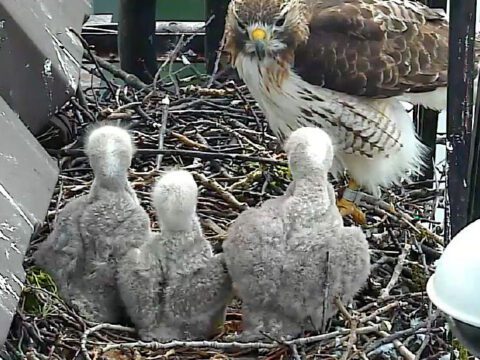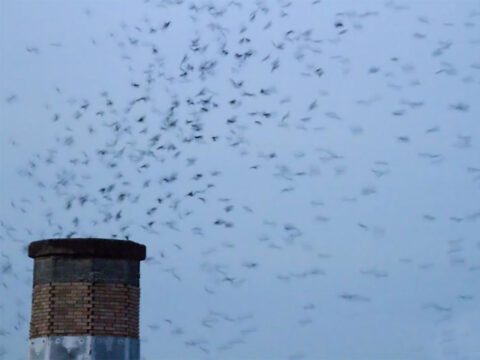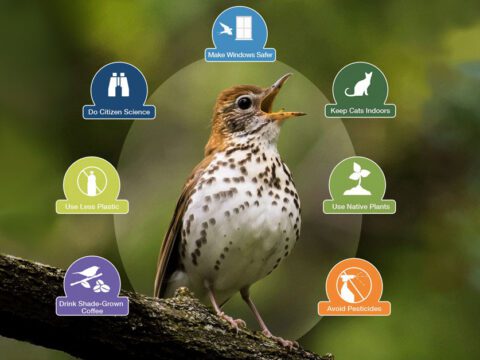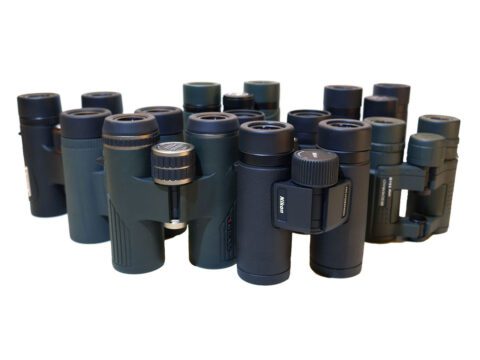Science at work: How many kinds of Red Crossbills are there, anyway?
By Wesley Hochachka August 2, 2011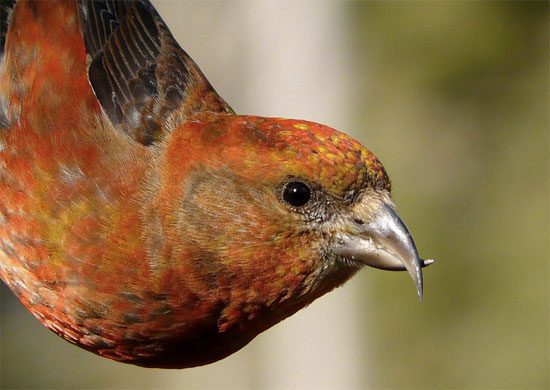
The world is full of amazing “radiations” of birds—that’s what evolutionary biologists call groups of closely related species that have evolved amazing diversities of plumage, size, bill shapes, and habitat requirements. The Darwin’s finches of the Galapagos Islands and the many species of Hawaiian honeycreepers are two of the most famous examples. So, why would a scientist choose to study a radiation of birds that all look very similar—all subtly hued and devoted to a single food, conifer cones?
Craig Benkman answered that question convincingly in his plenary talk on crossbills at this year’s American Ornithologists’ Union meeting. Craig has spent decades studying crossbills, and having known him for many years I think that he probably lives, thinks, and dreams crossbills (and it wouldn’t surprise me if he sprinkles pine nuts on his breakfast cereal too). Right now, we recognize two species of crossbills in North America—but Craig’s work shows ecological grounds for the possibility that there are many species of crossbills coexisting right under our noses.
Crossbills are finches whose beaks, as their name suggests, cross at the tip. This seeming malformation is actually a wonderful adaptation that allows the birds to access seeds hidden between the scales of conifer cones, seeds that are inaccessible to other species of birds. The curved bills, coupled with crossbills’ ability to shift their lower mandibles sideways, allow the birds to pry open conifer cones and extract the seeds with their tongues. (If that’s hard to envision, check out the video below that explains how a related species, White-winged Crossbills, do it).
Over his career, Craig has uncovered that among Red Crossbills, this remarkable feeding adaptation is even more finely specialized. Several different types of crossbills (they may be species, or near-species) each specialize on a different species of conifer—because different kinds of trees have differently sized cones and seeds. The sizes of the crossbills’ beaks closely match the cones they feed on and can efficiently pry apart the cone scales to get at the seed inside. Even the part of the beak used to crack open the conifer seeds, once they are extracted, is sized appropriately.
In western North America, where conifers come in widely varying sizes and shapes (such as ponderosa pines, lodgepole pines, Douglas-firs, and western hemlocks), this has led to the existence of multiple “types” of Red Crossbills. Each has not only a differently sized beak but also a distinctive call note that can be used—by birds or bird watchers—to tell the types apart. These types may or may not be full species, but they use different food sources, usually live in different geographic regions, and choose members of their own type with which to mate. So they in many ways behave like isolated species. The AOU’s North American Classification Committee periodically reassesses the evidence to decide whether to grant them full species status.
Another theme to emerge from Craig’s talk was that it’s not just crossbills that adapt to cones—the cones adapt to crossbills and other seed predators, such as squirrels. Red squirrels can outcompete crossbills for conifer seeds, because the squirrels preemptively cut the cones off trees and store them underground. In places with lots of red squirrels, the types of defensive structures on cones appear aimed to dissuade squirrels and not crossbills.
Even more dramatic evidence of the competition between squirrels and crossbills comes from two “islands” in Canada: the Cypress Hills, in Alberta and Saskatchewan, and forests on Newfoundland. The latter is a true island, and the former a biological island: forested slopes surrounded by prairies. Both of these “islands” held distinct and unique types of Red Crossbills, and before human intervention neither “island” was occupied by squirrels. Now, both of these crossbill types are either extinct or approaching extinction due to the introduction of red squirrels.
While crossbills may not be the most dramatic of birds to see or hear, Craig’s story provides a fascinating look into the ways in which animals and their food supplies can be tightly, and delicately, tied to each other.
Read more about the many types of Red Crossbills in this Living Bird article from 2010.

All About Birds
is a free resource
Available for everyone,
funded by donors like you
American Kestrel by Blair Dudeck / Macaulay Library

